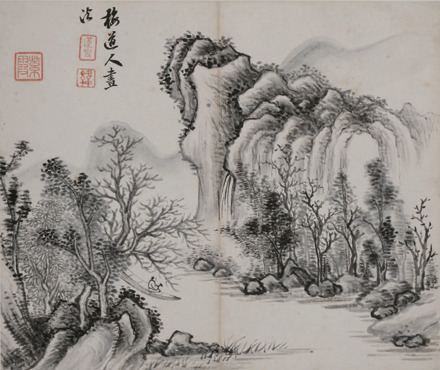Hangul 신위 Hangul 자하, 경수당 Died 1847 McCune–Reischauer Sin Wi Role Artist | Revised Romanization Sin Wi Name Sin Wi Hanja 申緯 Hanja 紫霞, 警修堂 | |
 | ||
Sin Wi (신위, 1769 – 1847?), styled Jaha 자하 or Gyeongsudang 경수당, was a scholar official of the late Joseon period as well as an amateur-painter in the literati artistic style.
Contents
Life and legacy
Born in Pyeongsan, he was attached to the embassy sent to China in 1813. He met Feng Fangkang (1733-1818), an authority in inscriptions on stone and bronze. Following the death of Crown Prince Hyomyeong in 1830, he was sent to exile, but later recalled. He was a progressive thinker, involved in the Sirhak movement.
His painting shows the influence of his teacher Gang Se-hwang (1713-1791), and he was also a follower of Yun Sun (1680-1741).
He is reckoned to be one of the greatest painters of bamboo, and his simple but effective landscape style showed his individuality. The same was true of his calligraphy.
Birth and death
The year of death of Sin Wi is unclear. Part of the references say 1845 while another part say 1847 ... None of these sources ever mention this discrepancy. Britannica uses the more precise statement: 1769(영조 45) 서울~1845(헌종 11).
Gallery
Sin Wi left works in various fields such as paintings, calligraphy and poetry.
The Korean Copyright Commission lists 18 paintings, 48 calligraphies, 7 moldings and 17 documents for Sin Wi, while Towooart gives a short notice.
